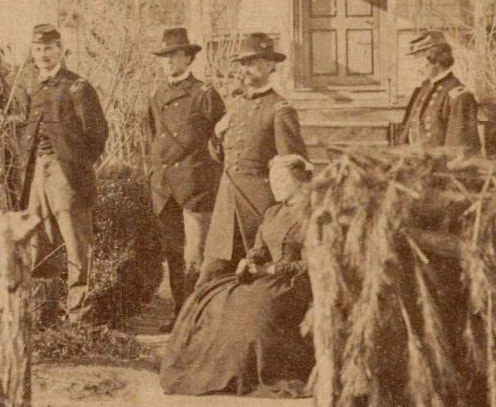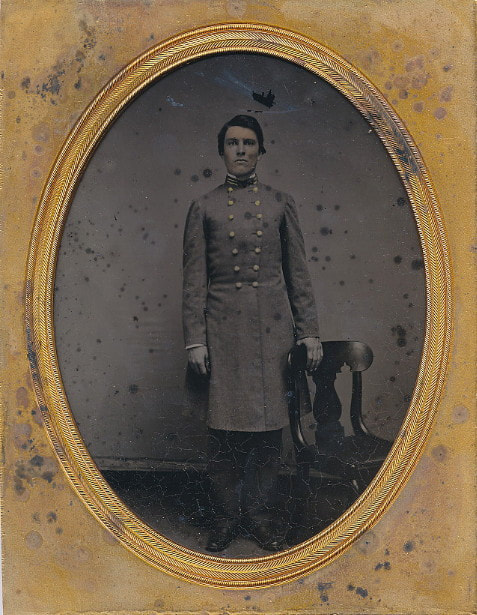|
A very entertaining account has been added to the "Sinks" page... don't miss it. Much goes on between the lines.
On a more heartwarming note- check out additions to Kittens, Puppies and Ponies. We've added a version of a paper we delivered at the Society for Historical Archeology Conference in New Orleans on January 4. Archeology isn't just about digging. Much of it has to do with modeling the activity of humans on the landscape at various times and for various purposes. The paper addresses various levels and scales of observation between the lines of combatants- from the heights of signal towers and trees, to the depths of covered ways and picket posts in locations where the observers needed cover.
There’s more we could have added- French terms are particularly descriptive- boyaux, a military term for communications trenches, can literally be translated as bowels or guts. A vidette, related to latin words about seeing and watching, is a mounted sentry in advance of the outposts of the army. Also- sometimes we read or reread a regimental account that provides great descriptions of some of the features we've already posted. In this case, James A. Emmerton, AA Record of the Twenty-third Regiment Mass. Vol. Infantry in the War of the Rebellion 1861-1865, provides good descriptions of the Confederate mine explosion of August 5, 1864, and has been added to our discussion of that topic. He also has a vivid description of the August 15, 1865 flood, which has been added to Dams and Inundations. "A Strange Sort of Warfare Underground"cord of the Twenty-third Regiment Mass. Vol. Infantry in the War of the Rebellion 1861-1865 These are images of the Federal armies mastering the siege of Petersburg. Many more photos downloaded and linked. Four-photo panorama (likely by Capt. Russell) identified and placed on the map. Much more work to be done .... City Point
New information has been added to the Winslow Homer page. Prisoners From The Front is an extraordinary tribute to a cousin.
A photograph in the Massachusetts Digital Collections Online was labeled "Frederick Augustus Schermerhorn: Headquarters of the 1st division, 5th cavalry at the Cummings House, Petersburg, Virginia" This appeared garbled and it was. 5th Corps, was intended. As a bonus, we have an annotated map from the National Archives that shows 1st Division, 5th Corps deployed at the Cummings House, November 2, 1864, which helps date the photograph. It is assumed that that is Mrs. Griffin seated.
The City Point page now includes photographic thumbnails with links to The Medford Historical Society Civil War Photograph Collection as well as thumbnails from the Album of Civil War Photographs belonging to Alice Mason at the Boston Athenaeum (link to the general collection). There is some overlap in subjects. Capt. Andrew J. Russell is identified in one photograph from Medford. Broadway Landing photos were moved to their own page.
Some of the lead expended by the Confederate forces at Petersburg was likely smelted at the leadworks constructed in 1862 on the southwest edge of town.This important facility was originally outside the city's defenses, but at some point new earthworks were built to protect it Strangely, a Confederate map of the Petersburg region compiled in summer 1864 misplaces the leadworks.
New: Confederate Leadworks No obvious place to post this, so it will stay in blog format.... Bryce Suderow pointed out this reference in Theodore Lyman's notebooks (how did we miss this?), for June 21, 1864:
“Rode out to meet Barlow coming back. A little beyond the Browder house descried him coming along at the head of his column, arrayed in a checked shirt and lolling about on his horse, more suo! “Hullo! See here!” shouted he “I’ve caught a Cambridge man!”- sure enough, there was a stout, handsome man, mounted on a fine white horse, and daintily dressed, with the stars of a Colonel on his collar and a fanciful sort of helmet of grey felt. It was a certain Baker, in the law school at the time of Daves &c. His effect was spoiled by Barlow’s quaint device of mounting a most scaly looking Adjutant, en croupe, behind him! The wounded were carried to the Williams house” (pp 218-219). And the next day, June 22, 1864: “At Gen. Patrick’s found the once splendid Col. Baker, dusty & exhausted under a tree. Barlow had relieved him of his horse”….(221). Meade's Army: The Private Notebooks of Lt. Col. Theodore Lyman, edited by David W. Lowe, Kent State University Press, 2007. Col. Baker was amongst Confederate cavalry captured by Barlow's Division of the U.S. II Corps on June 21, 1864, during the first day of what became known as the Battle of Jerusalem Plank Road. Apparently he was recognized as a fellow Harvard man by Barlow and Lyman. Baker's fine white horse seems to have been the horse Barlow bought from a Confederate colonel. The horse may have been one of those sketched at Petersburg by Winslow Homer. The sketch was later used in the famous painting Prisoners at the Front, which shows Barlow and three Confederate prisoners. The "handsome" colonel, however, looks nothing like any of the three Confederates. See https://www.findagrave.com/cgi-bin/fg.cgi?page=gr&GRid=42651889 for more about Baker, including his six marriages. Winslow Homer, Special Artist See this page for more about the painting and the horse. Theodore Lyman, thanks to David Lowe, comes to the rescue and helps us identify a Charles Chapin drawing of dignitaries in an unnamed fort bastion as being Fort Wadsworth. Eventually we'll start a page for Fort Wadsworth, but- for the time being- this interesting sketch can be seen here:
Charles H. Chapin, Special Artist |
The Petersburg Project"It was, after all, a Civil War." Archives
April 2024
Categories |



 RSS Feed
RSS Feed
